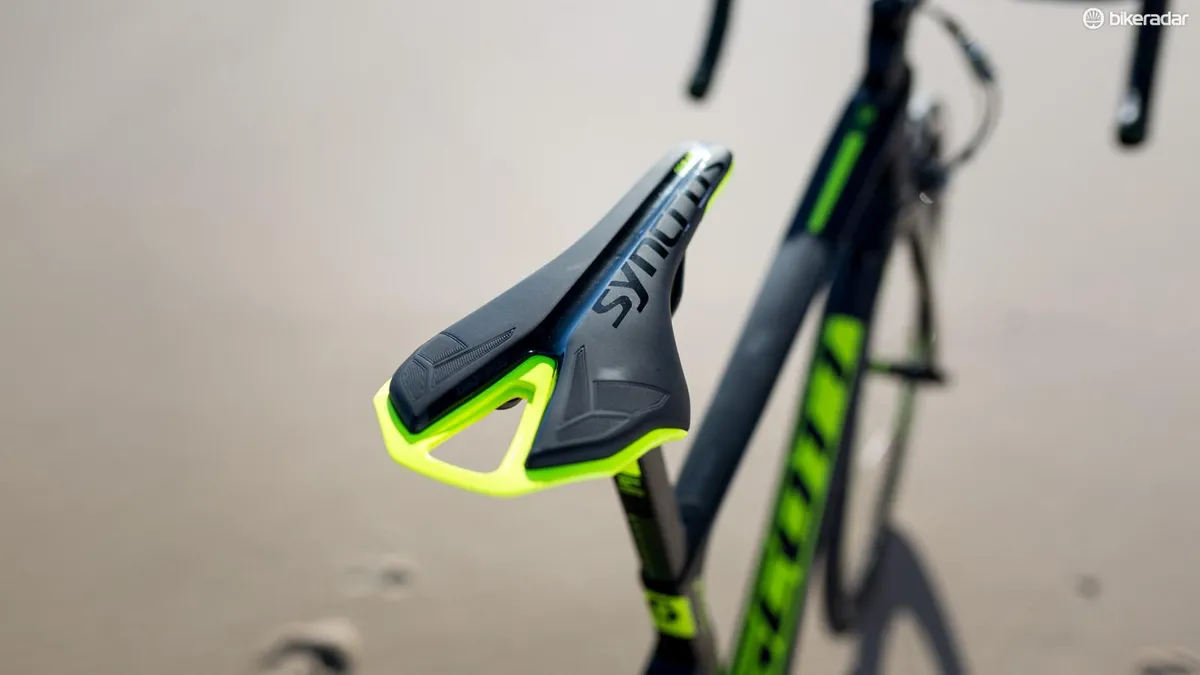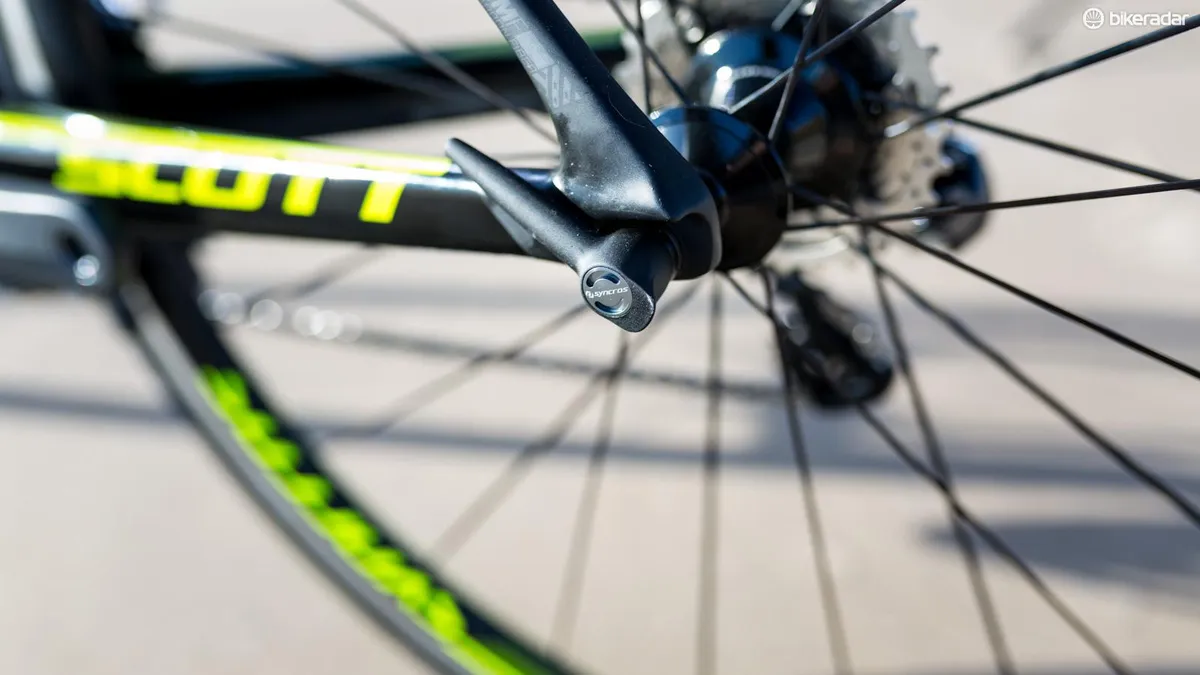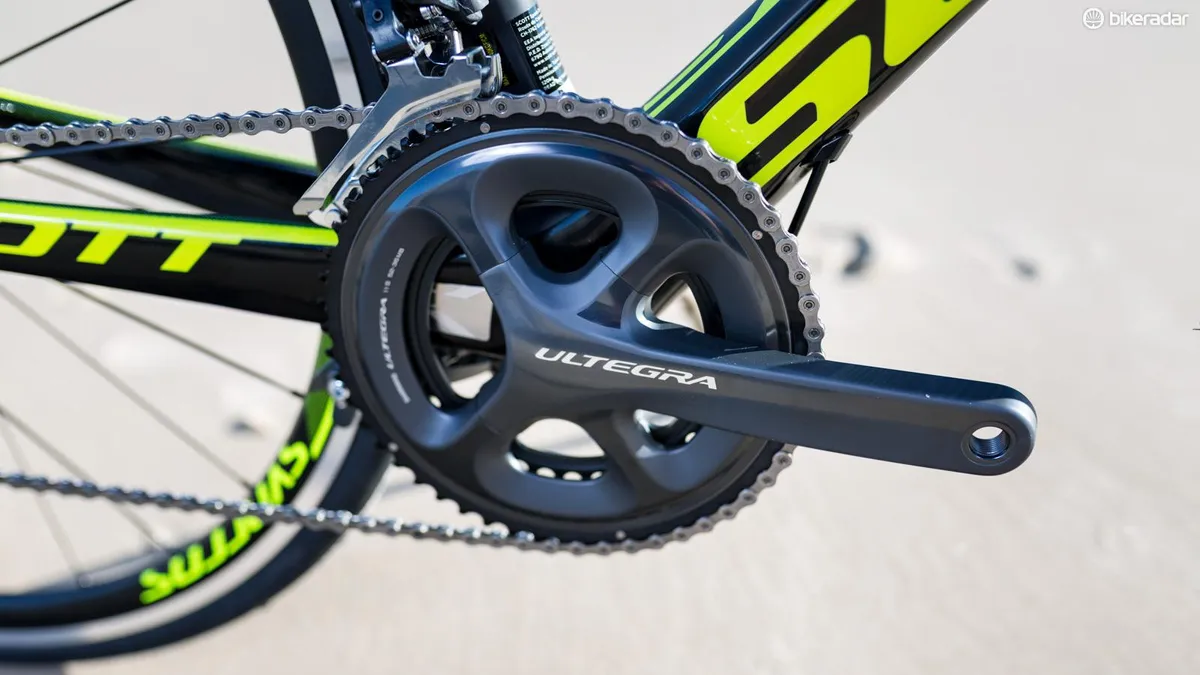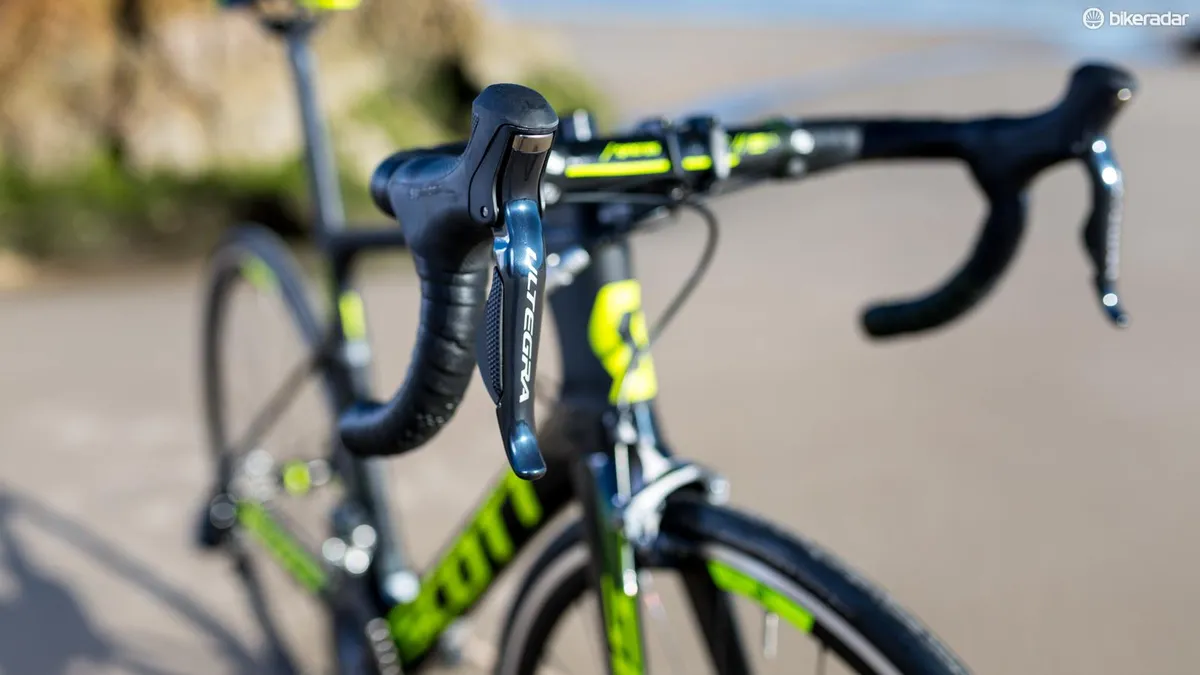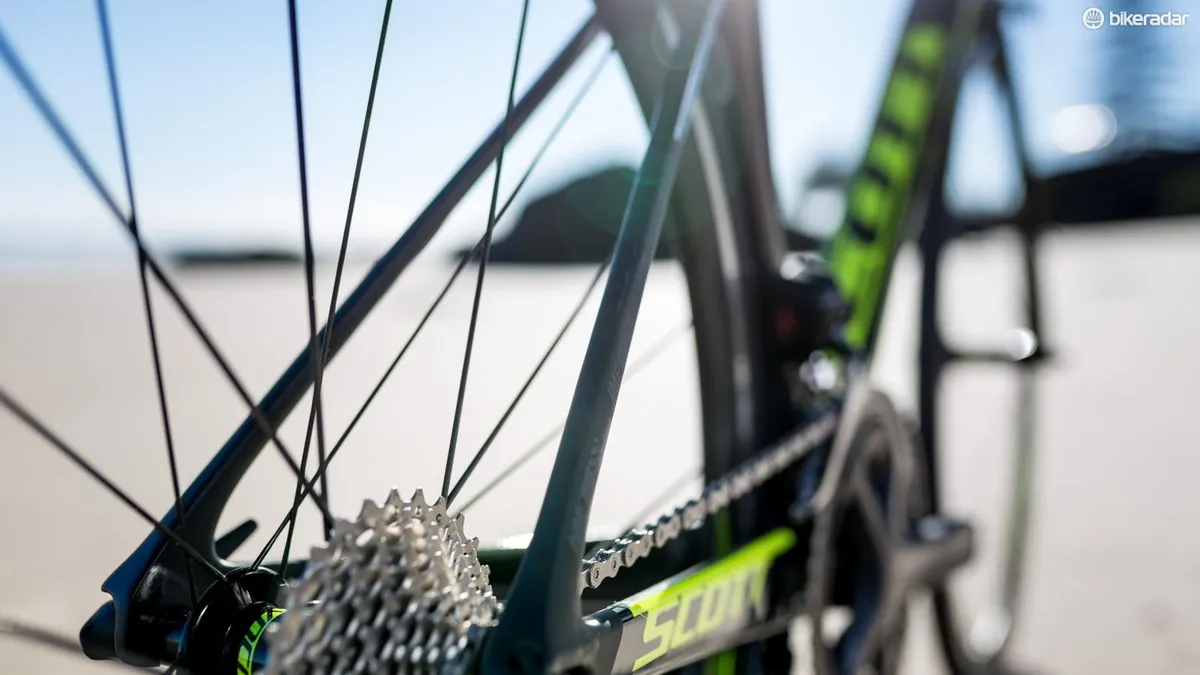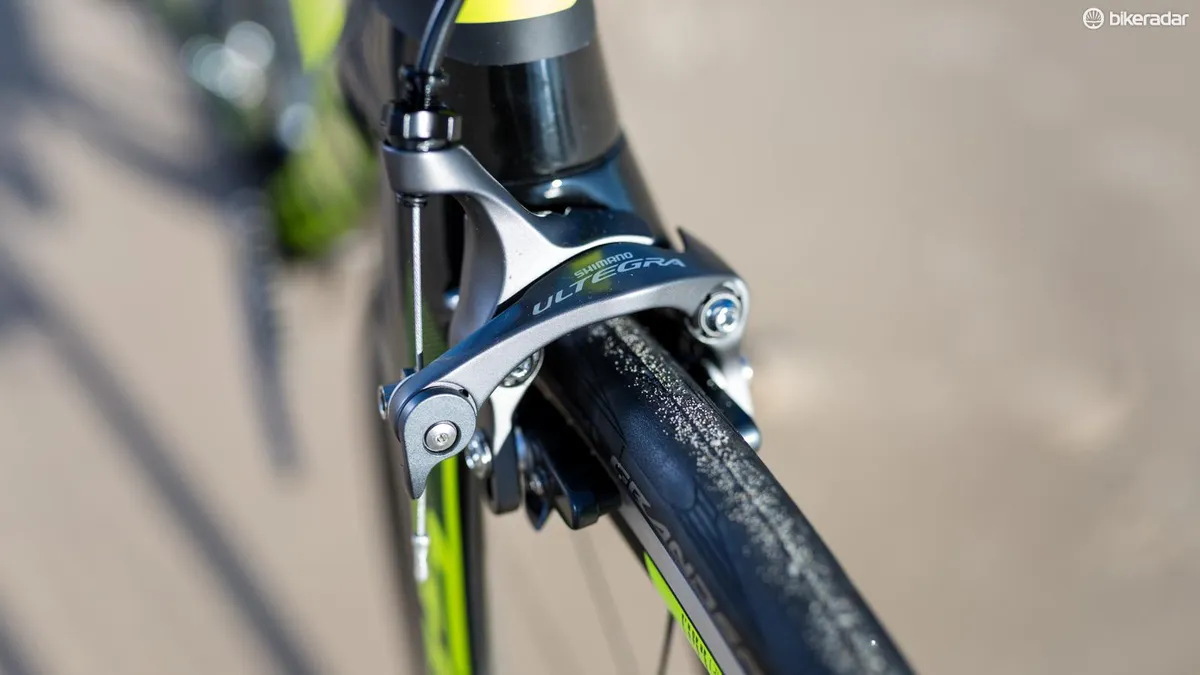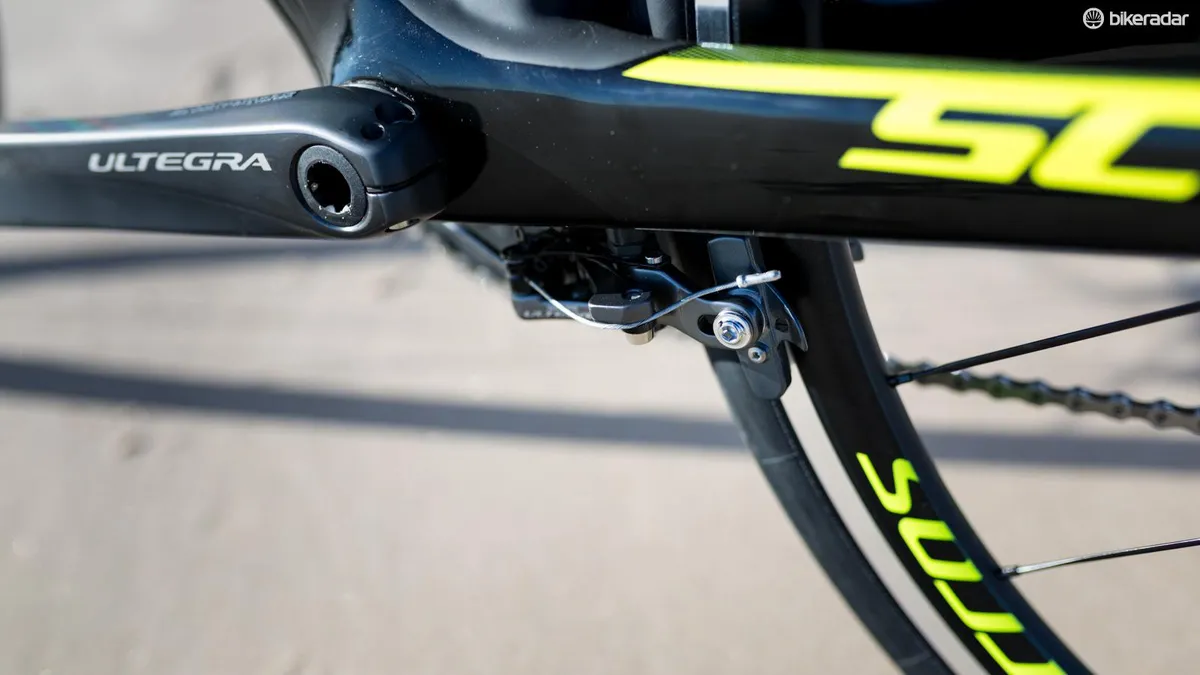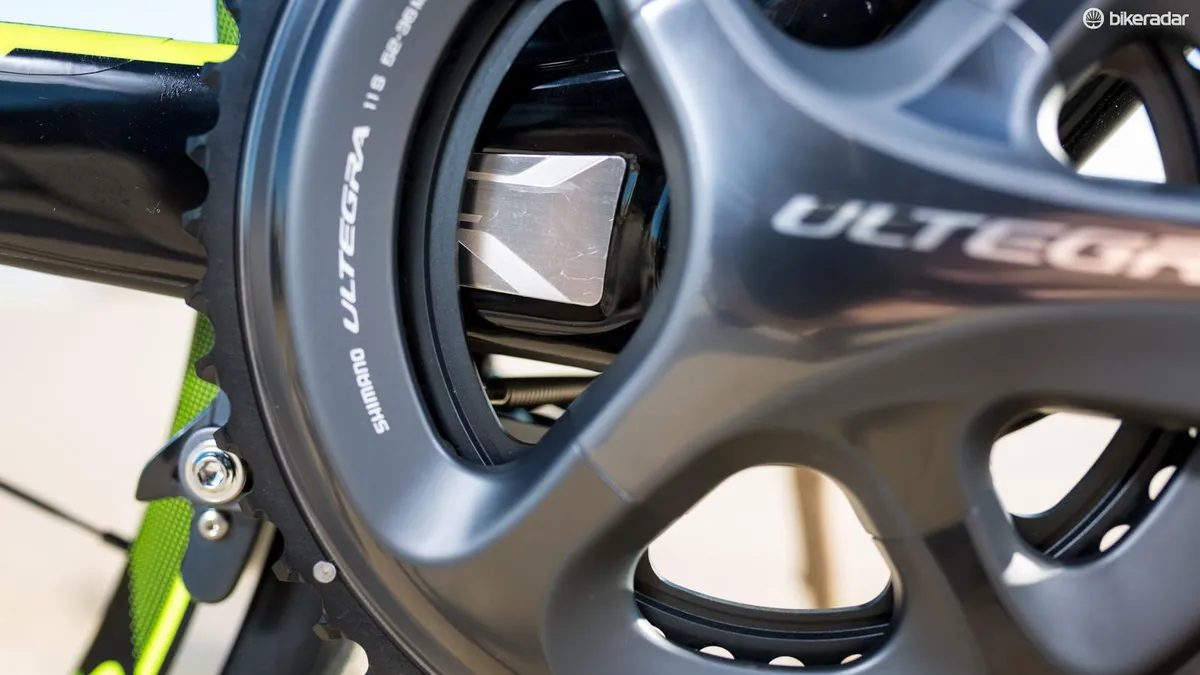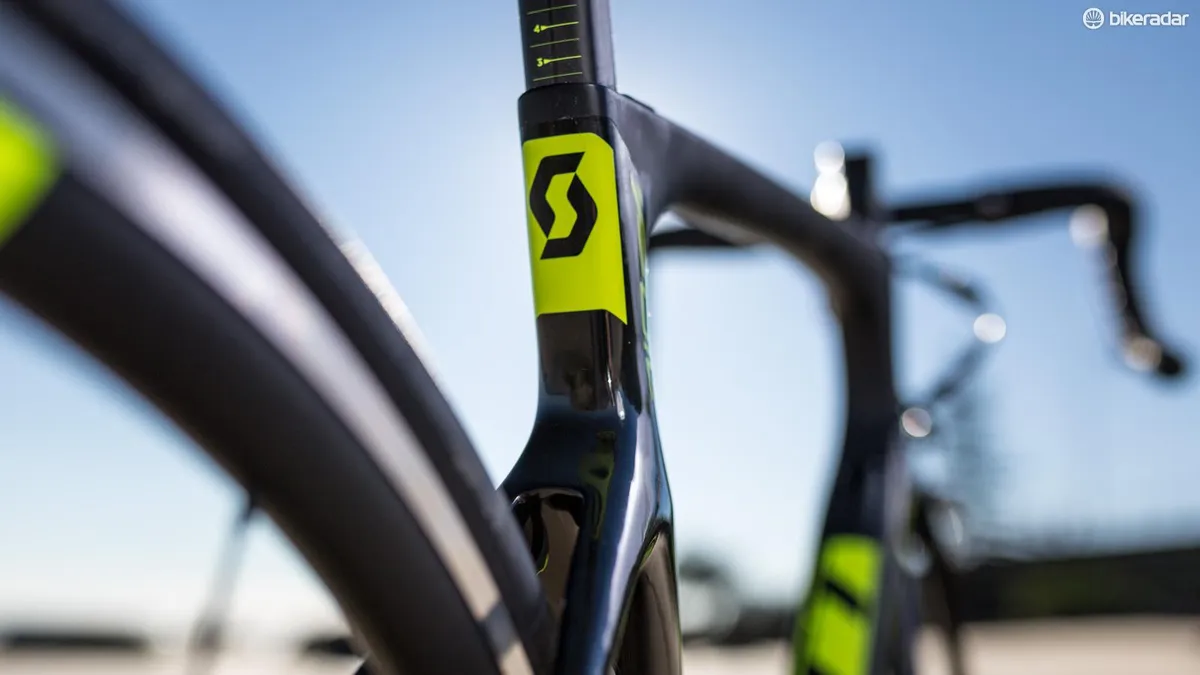Ahead of last year’s Tour de France, the Scott Foil received a head to toe redesign. Classed as Scott’s aero ride, the original Foil featured truncated airfoils, which much like the previous Trek Madone didn’t look all that aero.
The original Foil was ultra stiff with tack-sharp handling, best in class power transfer and every bit of feedback was instantly translated to forward momentum or steering. In fact, the frame was so stiff when you clipped into your pedals you could feel a zap through the saddle.
Since its launch, the flagship Team Issue edition has received no shortage of accolades, including a win at Paris-Roubaix
With such a rigid and responsive frame, the Foil was also quite harsh and unforgiving on less than pristine roads. Make no mistake, it was a thoroughbred racer that put handling and speed above all else, and even the models lower in the range displayed these characteristics.
Scott Foil Vs. Mason Bokeh - What's best on pavé?
The bike industry follows the Daft Punk’s theory of innovation, with every new iteration of a product being harder, better, faster, stronger (stiffer, lighter, but also more compliant). And, when Scott debuted the new Foil, it looked a bit more like an aero bike; and it claimed an 89 percent increase in vertical compliance, 13 percent increase in lateral stiffness at the bottom bracket, 13.5 percent increase at the head tube stiffness and 6 percent increase at the fork compared to the original Foil model.
Scott also says the fork, head tube, seat tube, seatstays and seatpost have been optimised aerodynamically both independently and as a system, which adds up to a bike that saves six watts on average over the tested yaw spectrum compared to its predecessor.
Since its launch, the flagship Team Issue edition has received no shortage of accolades, including a win at Paris-Roubaix! So how does the new mid-range Scott Foil 10 stack up?
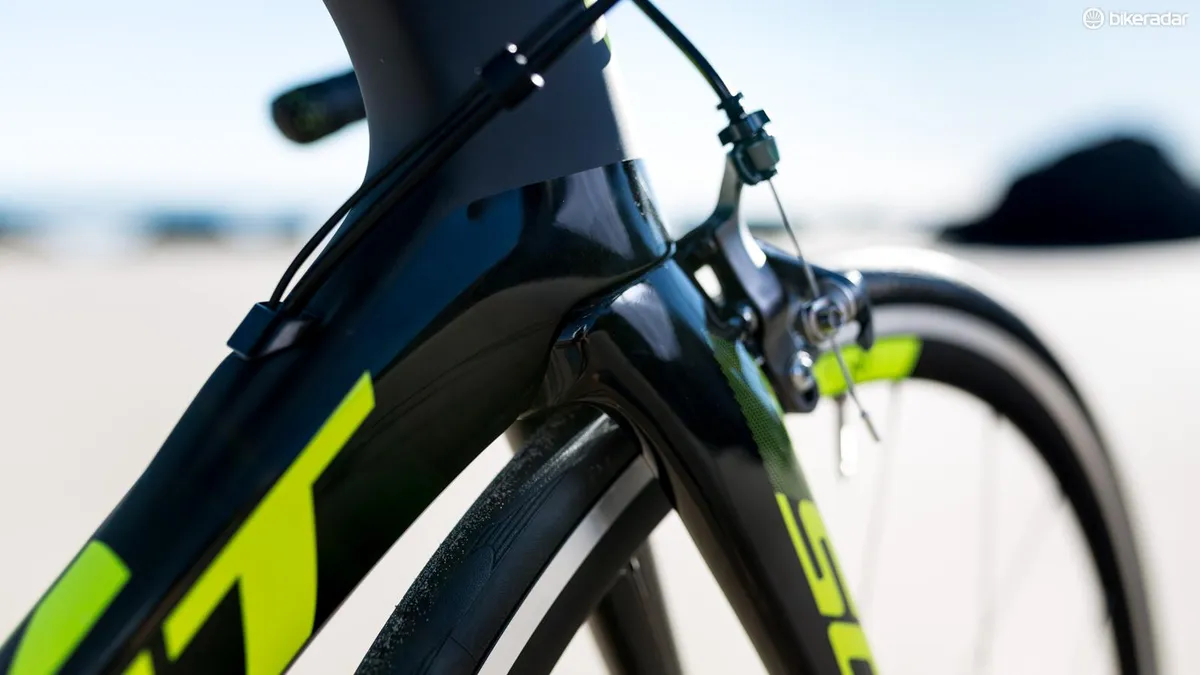
Soft at the rear, harsh at the front
Knowing that Mat Hayman piloted the new Foil to victory over the cobbles, I immediately sought out every dirt road I could find to see if the bike was really that much more comfortable, or if Hayman just has superhuman buns of steel. It turns out after riding miles of rough terrain the new version is pretty damn comfortable.
It’s clear just by looking at the frame that aerodynamics were a major consideration during the design process of the new Foil
True to its claim, Scott has changed the Foil's body busting reputation to something slightly more akin to a teddy bear. The seatstays have been dropped considerably and the seatpost features a square back-edge to encourage some vertical flex without twisting, which creates a supremely comfortable rear end. Some of this can be attributed to the 25c tires and suitably wide rims, but working as a system with the new rear triangle and flat backed seatpost it does extremely well to take the square edge off wince-inducing impacts.
With that said, the front end is a different story. Scott has stiffened the front end and, combined with the alloy bar and stem, is a bit less forgiving. The alloy bar and stem translate a fair bit of vibration compared to the rear, which made the ride feel a bit unbalanced.
Let's not forget that this is a race bike after all and with a geometry chart that just about mirrors its predecessor, it's plenty aggressive. The chassis is stiff, I wasn’t able to detect any discernible flex, and the frame is agile when it comes to changes in speed. But the new frame lacks the noticeable ‘snap’ of its predecessor and it just doesn’t have the same oomph when you attack the pedals.
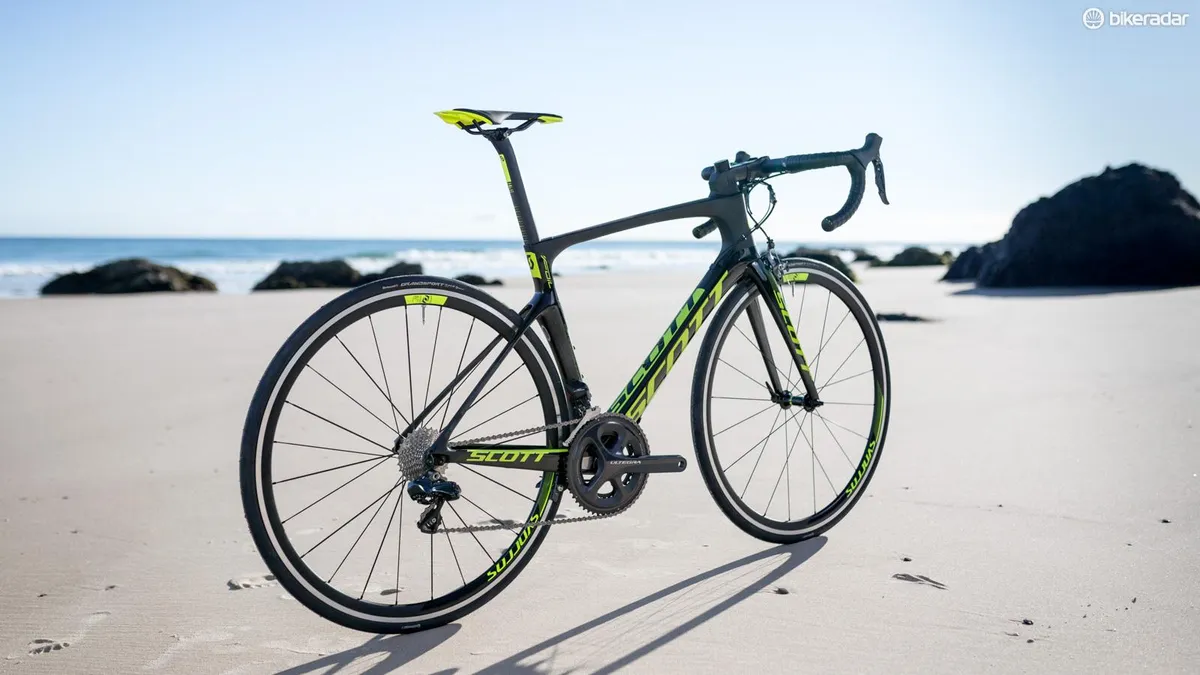
The handling is still sharp, with minimal input from your hands or hips required to initiate a corner or to correct your line mid bend. At speed, it's confidence inspiring and the bike also doesn’t punish you for lapses in concentration.
It’s clear just by looking at the frame that aerodynamics were a major consideration during the design process of the new Foil. It still sees truncated airfoils, but the frame is much sleeker than its predecessor and although there are plenty of wind tunnel figures to back it up, I can’t say there is a discernible aero advantage from the new frame. However, with its Kamm tail design the new Foil is not particularly susceptible to side winds, though the wheels are also part of that equation.
The Foil 10's winning spec
Made with Scott's second tier HFM carbon fibre, the Foil 10 tipped our scales at 7.71kg in a size medium, only half a kilo more than the Dura-Ace equipped Foil Team Issue in the same size.
The Foil 10 also doesn’t get the same amount of integration as its more expensive cousins, but to be honest that’s not necessarily a bad thing.
Instead of the integrated carbon bar and stem on the higher end models, the Foil 10 gets Syncros RR2.0 Anatomic 31.8mm alloy bars and a Syncros Foil stem. Both are respectably stiff and although I complained about the vibration transmitted at the front end of the bike, the anatomic bend in the bars and shallow drop makes for comfortable hand positions. With the bar not being aero shaped, it also makes mounting computers and lights less of a headache.
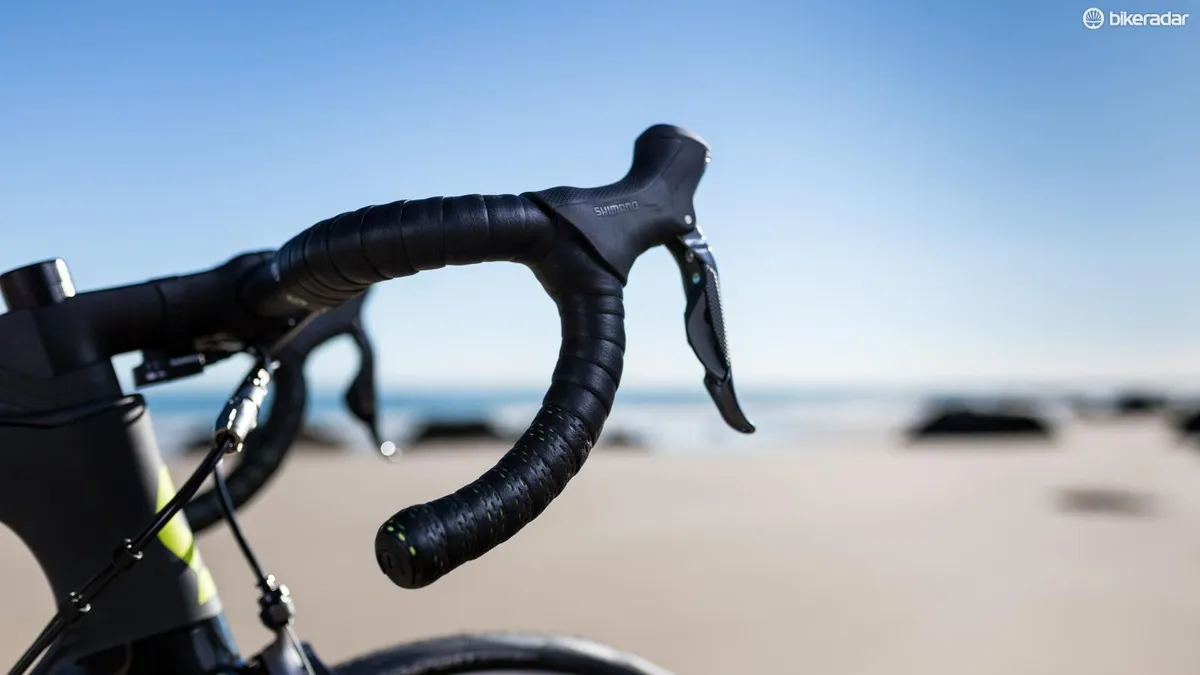
The aero spacers for the stem are pretty smart too, making the head tube meld into the stem. The stem even has a recess so the top cap will sit flush, but unfortunately I couldn't cut the steerer as the bike is going back to Scott.
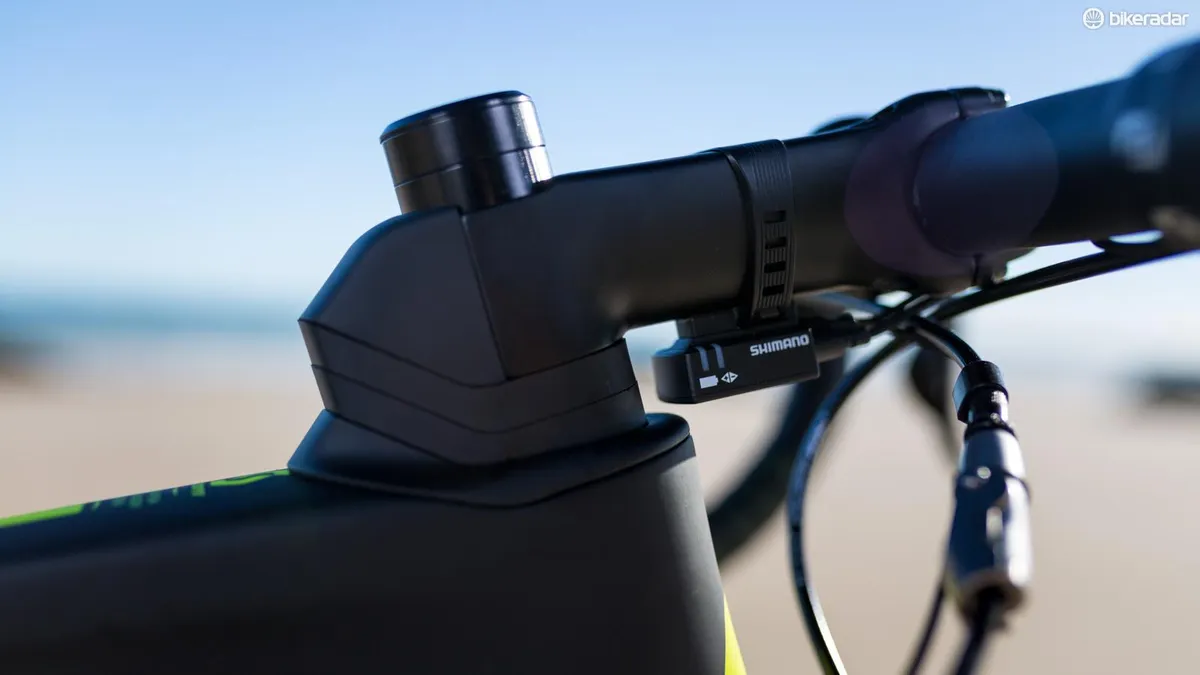
With the front end of the bike being responsible for a large portion of the overall drag, Scott has dropped the down tube and recessed fork crown to close the gap behind the fork. The headset’s lower bearing is also dropped to allow the head tube to be stretched and smoothed, which it claims offers cleaner airflow.
At the rear, the seat tube shrouds the rear wheel and Scott says that in combination with the lower chainstays this cleans up airflow in the area.

Even still, there’s plenty of tire clearance on offer and the bike is spec’d with 25mm Conti Grand Sport rubber, though you could definitely go bigger. Although the Grand Sport tires err more on the side of puncture protection than speed, they roll well and proved to be the perfect companion for wash-boarded, rock strewn dirt roads and rough terrain.
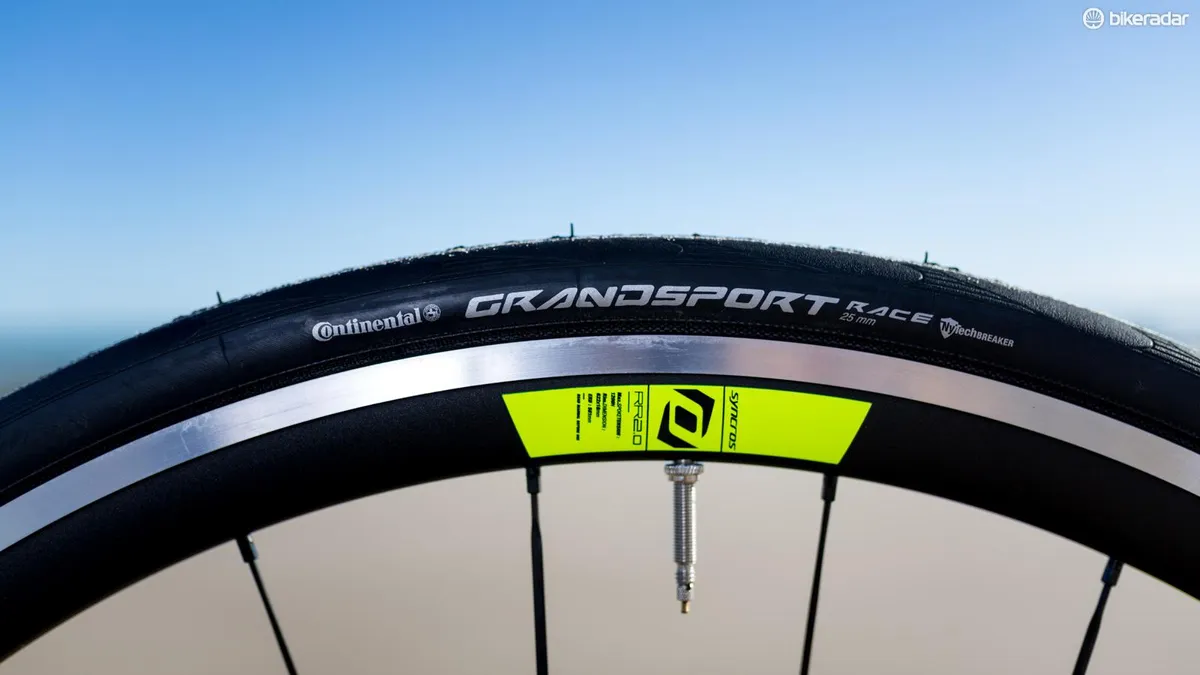
Aesthetically the Foil 10 looks a bit out of sorts with low profile alloy rims, but the Syncros RR2.0 wheels perform well. The Syncros hubs are still as smooth as the day we unboxed them and the wheels are stiff, responsive, and 18mm internal width spread a 25mm tire nicely — they are colour matched to the frame too.
As usual, it’s difficult to find fault with the Ultegra Di2 drivetrain, the shifting is fast and flawless. The 52/36 semi-compact gearing combined with the 11-28t rear cassette provided for oodles of range, whether it be mountain goating up the hill to my house or trying to mix it up in a fast bunch.
Although I didn’t need it, the built-in chain catcher and chain suck guard provided for some peace of mind, too.
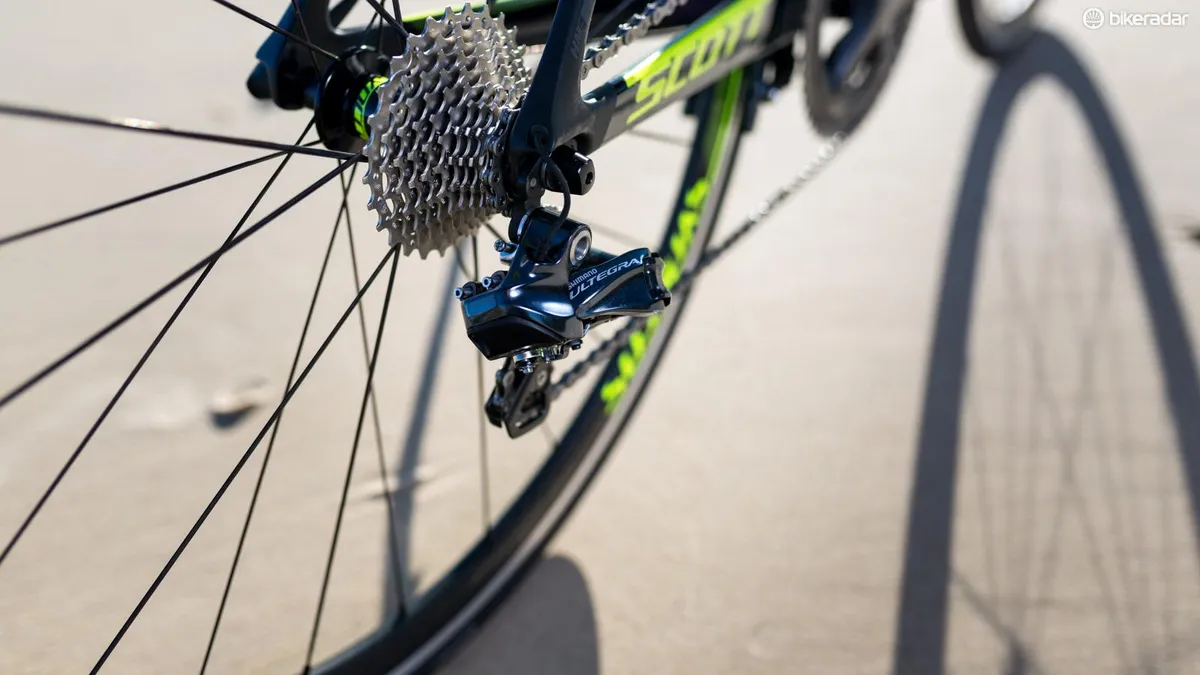
That said, the clearance between the left crank arm and chainstay is pretty tight, so before you go out and buy a crank based power meter, make sure it fits.
Scott has also opted to ditch the centre mount brakes in lieu of direct mount. With the direct mount system caliper, flex is a non-issue and there is no shortage of power at the lever both front and rear. While hiding the rear brake under the bottom bracket cleans up the aesthetic of the bike, I’m still not a fan. It’s a little fiddly to set up and adjust, and attracts quite a lot of dirt and grime, which requires a bit of extra attention.
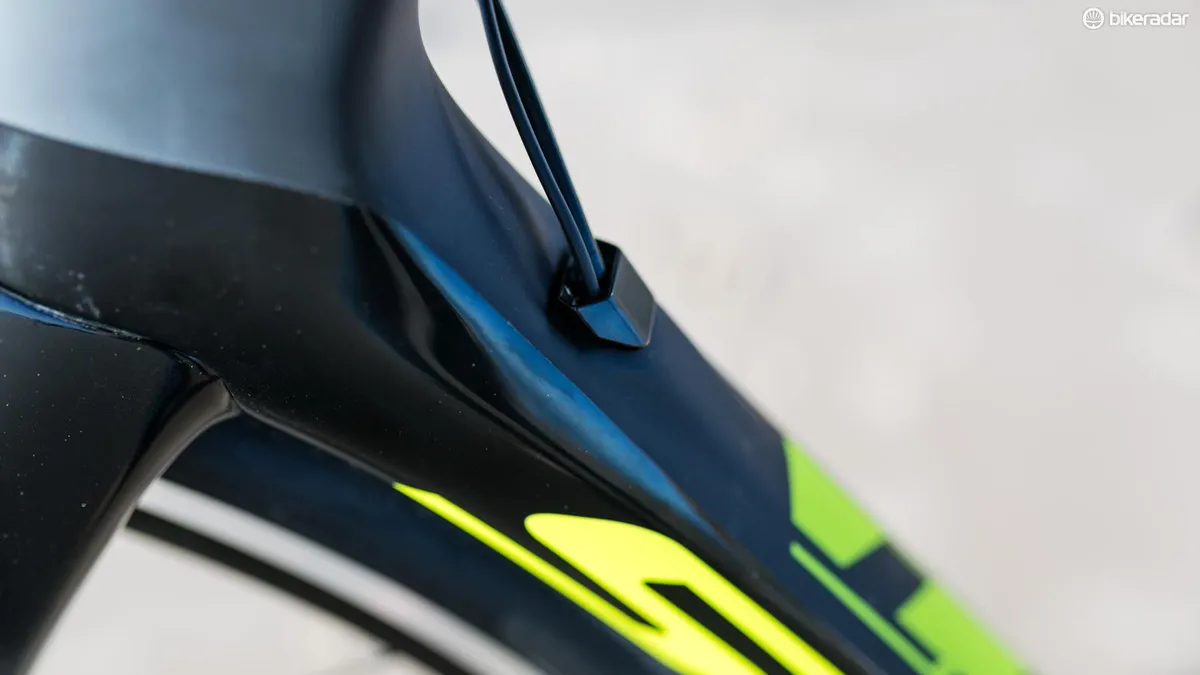
The right tool for every job
Overall, the new Foil is a slightly watered down version of its predecessor, but to be honest that’s not a bad thing in my opinion. The previous version was the ideal weapon for high octane crit racing, but if you wanted to go on a ride with your buddies that involved some rough roads you paid a serious price. The trend for riding road bikes beyond where the pavement ends is not going anywhere and bikes that lack versatility are going to be left behind.
The Foil 10 is just as comfortable pulling turns as it is grinding gravel. While it lacks the unforgiving stiffness of its predecessor, it’s so much better suited to a wider variety of riding. And considering most of us only race once a week, if that, it’s a welcome development.
